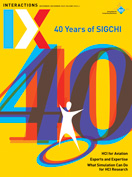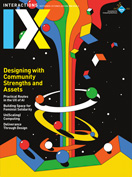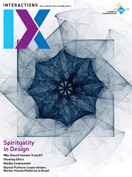Authors:
Nashra Mahmood
I'm constantly saving or bookmarking things to read, on my phone, my laptop, Internet browsers, and social media accounts. Saving in the context of HCI is all about preservation for future use. The social affordances of my sociotechnical environment have successfully inaugurated me into a demigod-like subjectivity, where after eight-plus years of deep tactile interaction with intelligent machines, primarily in North America, my phalanges and eyeballs now naturally locate and file away "information items" they want to revisit later. These visceral sensorial encounters with smart technologies have elevated my status from mere mortal to that of demigod, or more appropriately, the latest iteration of the secular humanist, the 21st-century "cyborg" [1] with God-like attributes, known for extensive computing, memory, and storage abilities.
However, this status elevation is predicated upon dark pattern contracts, that is, "user terms of agreements" driven by the secular humanist language of democracy, choice, and freedom. Jasmine McNealy and Stephanie Nguyen's e-zine I, Obscura [2] sheds light on how user interfaces of various mobile applications rely on "dark patterns" to trick, coerce, and manipulate us users into giving away personal data, wasting time, and, in extreme cases, experiencing social discrimination and/or accruing financial or legal charges we did not prepare for. This cyborg experience, allegedly devoid of religious thought, is a strategically composed mirage. In Is Critique Secular? Talal Asad writes about how the transmutation of Western Christianity to Western modernity with a distinctly secular character "mimics the sacred Christian narrative." [3]. Nineteenth-century notions of objectivity, rationality, and reason still dictate the secular, yet enchanted, disposition of our androcentric and racist smart machines that outfit our contemporary cyborg selves.
Turning to Sylvia Wynter's interdisciplinary historical account of "being human" under coloniality, we learn that the 21st-century cyborg self is an iteration of the "degodded" man that emerged in the 19th-century Darwinian/Malthusian imaginary, a "redescription of the human" as the "highly selected and highly 'deserving' white race" made natural through biological sciences and racializing discourses that position the nonwhite races as categorically outside the domain of man [4]. Wynter's words should provoke us to ask: How is the 21st-century cyborg reifying a Global North, white, bourgeois subjectivity? To put it differently, how do discourses of rationality, reason, and secularity function to naturalize the expulsion of Black, Indigenous, and other people of color from contemporary boundaries of man/cyborg?
1. Haraway, D. A Cyborg Manifesto. 1991; https://theanarchistlibrary.org/library/donna-haraway-a-cyborg-manifesto.
2. Padejski, D.J. 'I, Obscura,' a dark pattern zine launched from Stanford and UCLA. Stanford PACS. Jul. 15, 2021; https://pacscenter.stanford.edu/news/i-obscura-a-dark-pattern-zine-launched-from-stanford-and-ucla/
3. Asad, T. Brown, W., Butler, J., and Mahmood, S. Is Critique Secular? Blasphemy, Injury, and Free Speech. Fordham Univ. Press. New York, 2013, 17.
4. Wynter, S. Unsettling the coloniality of being/power/truth/ freedom: Towards the human, after man, its overrepresentation—An argument. CR: The New Centennial Review 3, 3 (2003), 324; https://doi.org/10.1353/ncr.2004.0015
Nashra Mahmood is a fifth-year doctoral student at the University of California, Los Angeles. They previously focused their research efforts on studying feminized labor and unionization in North India's informal economy. Their ongoing research is studying how media manipulation and racist [dis]information in Indian media has rewritten social processes for newsmaking. [email protected]
Copyright held by author
The Digital Library is published by the Association for Computing Machinery. Copyright © 2022 ACM, Inc.







Post Comment
No Comments Found